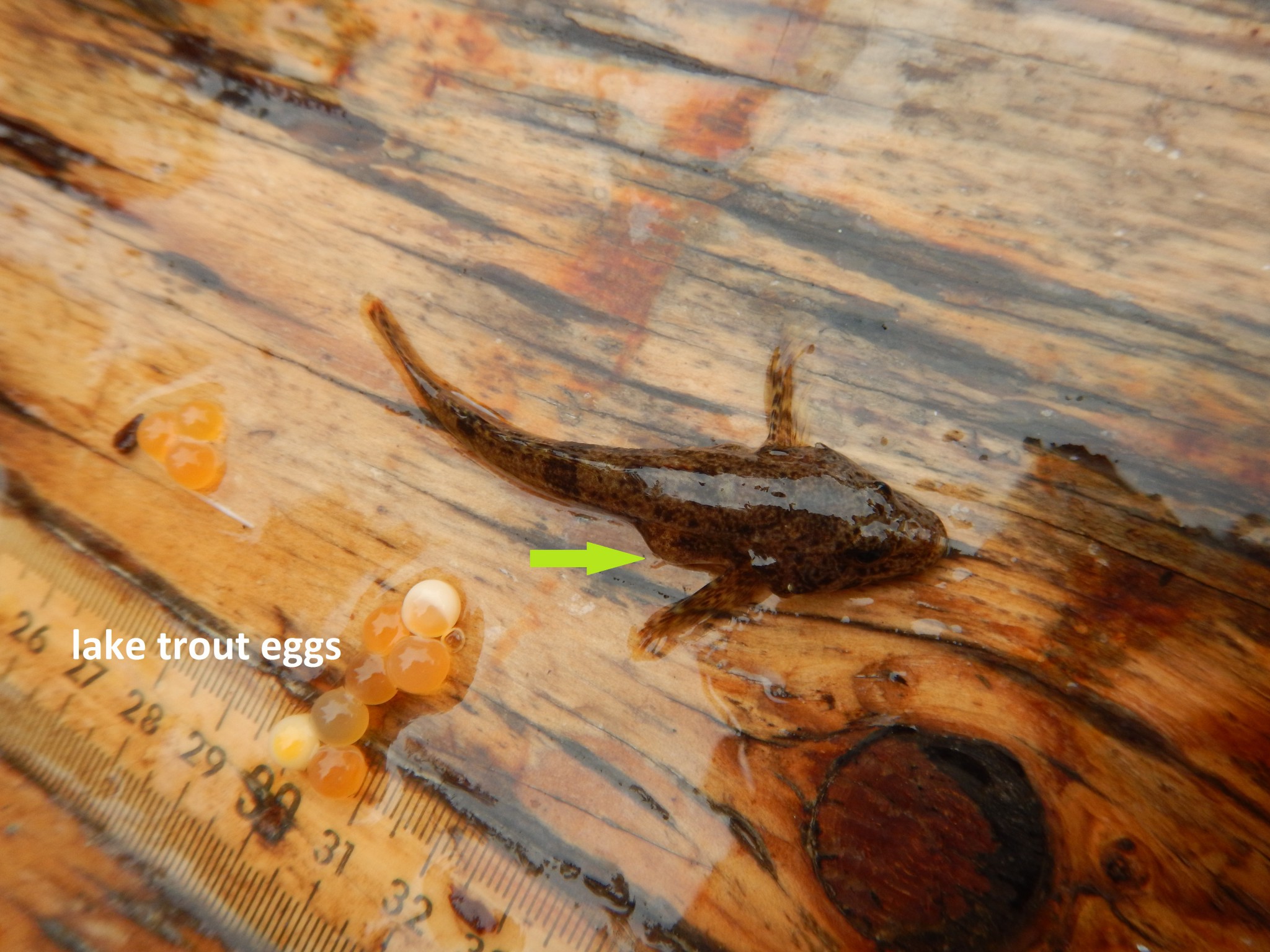Photography April 18, 2016
The IISD-ELA Fish Crew’s Top 8 Highlights of the 2015 Research Season
By Lee Hrenchuk, Biologist
The fish crew had a busy field season at IISD Experimental Lakes Area (IISD-ELA) in 2015!
First up, we added to the long-term ecological research (LTER) data set by studying all of the fish species present in a variety of lakes; several whole-ecosystem experiments successfully continued to examine the effects of factors such as mercury pollution, nanosilver and climate change on fish; we collaborated with external researchers and graduate students from a variety of institutions including the University of Manitoba, Lakehead University, Trent University, University of Toronto, Environment Canada, Milne Technologies, Sonotronics, and Kongsberg; and were pleased to provide expertise and hands-on field experience for several high school and university field courses.
Here are eight photos that depict our highlights from the past field season:
- Fish research doesn’t stop when the lakes are ice-covered! Our fish-tracking receivers stay in the lake throughout the year to track depths and spatial positions of fish in several IISD-ELA lakes. Biologist Lee Hrenchuk puts a receiver back into the lake
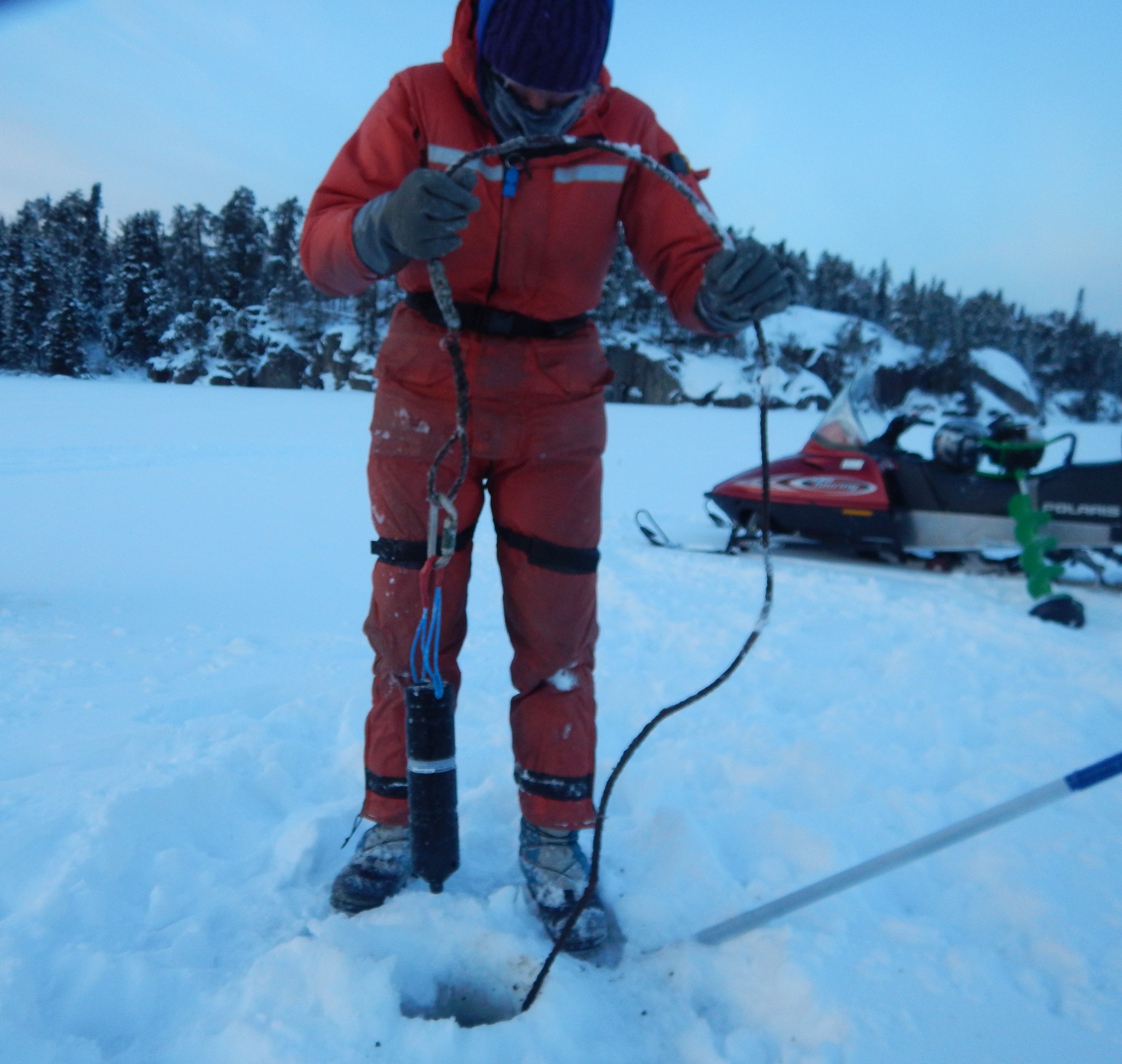
- after downloading the data in January 2015.
- In May we started testing out some new fish tags with lake whitefish (Coregonus clupeaformis) in Lake 658. These tags get attached to the outside of the fish and measure the temperature and oxygen concentrations of the water as the fish swims around.
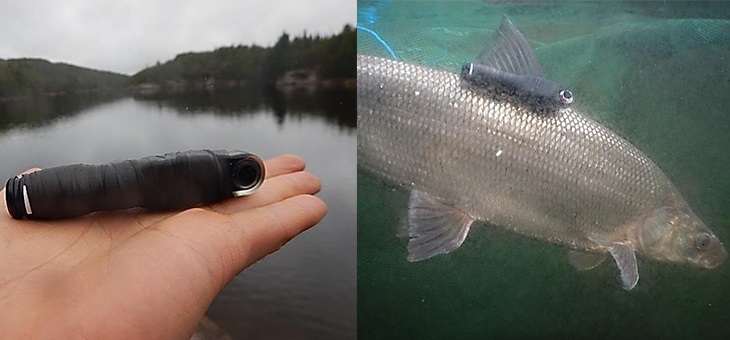
- Each year before the water warms up we perform a few surgeries to implant tracking tags in lake trout (Salvelinus namaycush). These tags send out signals every few minutes that are detected and recorded by the tracking system in the lake. By tracking these fish, we can figure out where they like to hang out, what depths they prefer, and how they interact with one another. Biologists Lee Hrenchuk (left) and Chandra Rodgers are the surgeons for this lake trout. You can watch a video of the surgery process here.
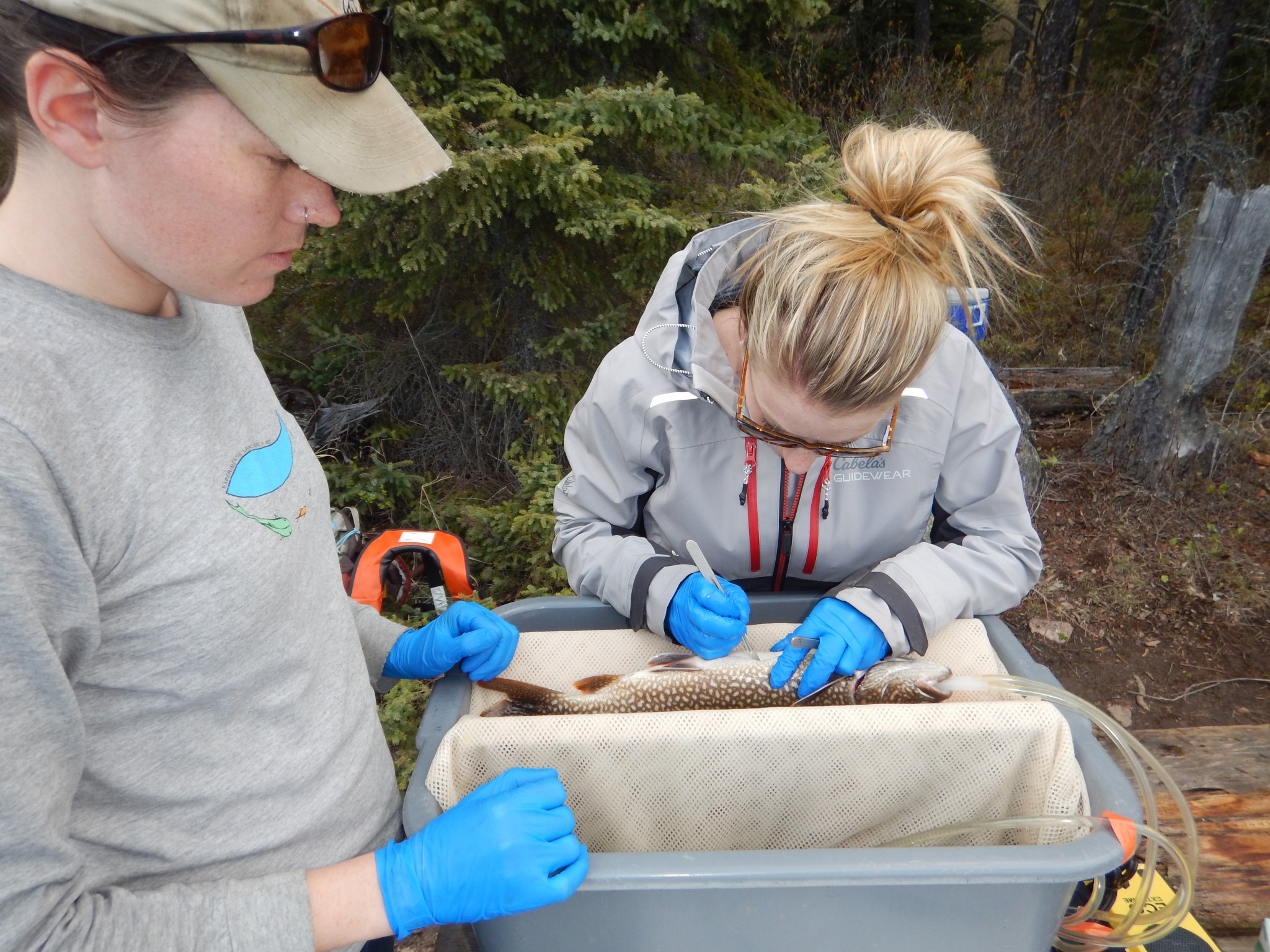
- To track tagged fish in the lakes, we set out arrays of receivers called VR2Ws (black oblong item on left). These receivers are submerged in the lakes, attached to an anchor and a float. Twice a year, we pull up the systems and download the data. Here, fish crew field assistant Phil Anderson gets ready to deploy a receiver in Lake 224
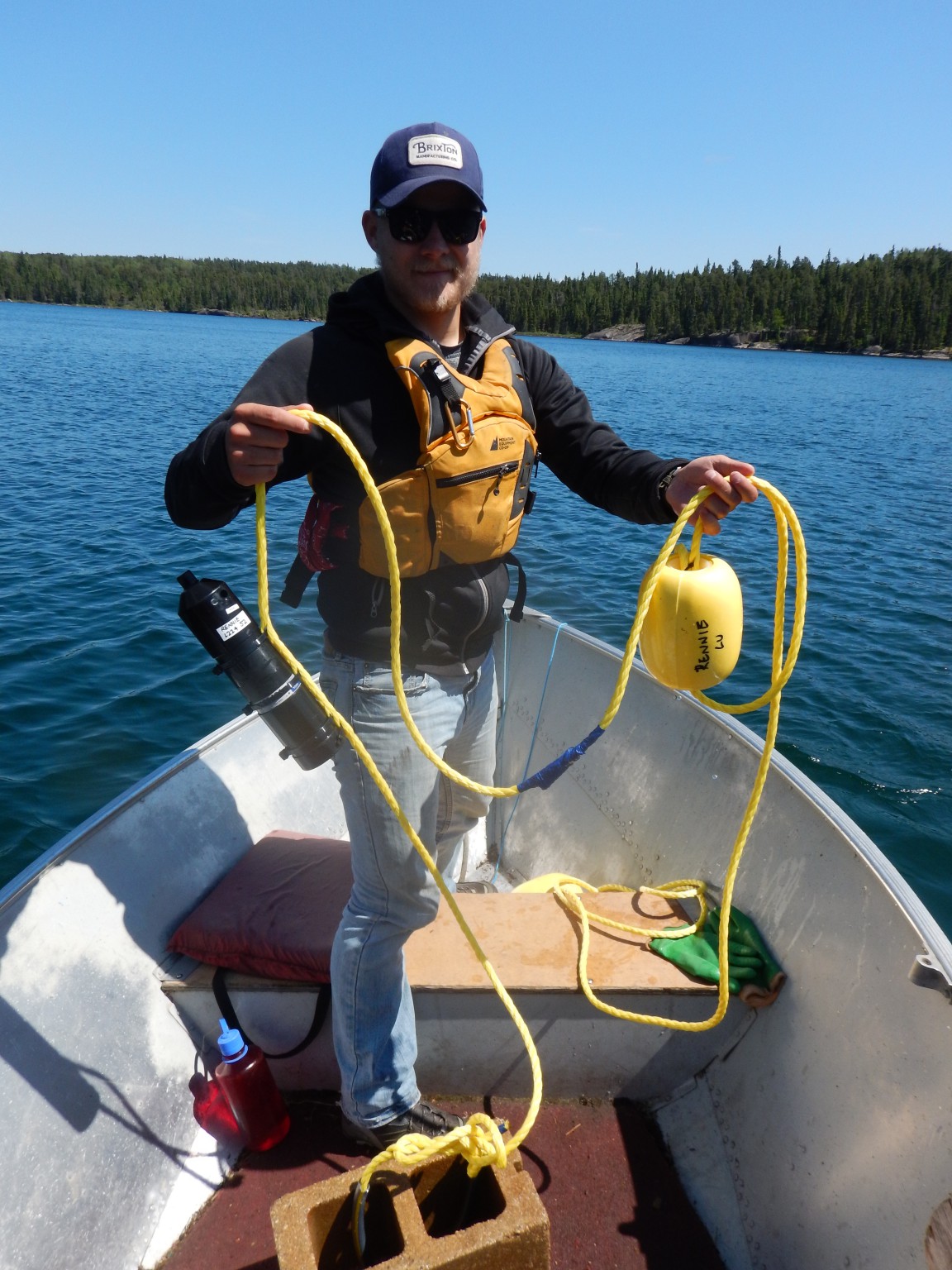
- IISD-ELA hosted a field course for five students from two Winnipeg high schools. Two of the students conducted independent research projects to assess minnow bait preference and escape from minnow traps on Lake 114. Here, the students are sorting minnows by species into different buckets for counting.
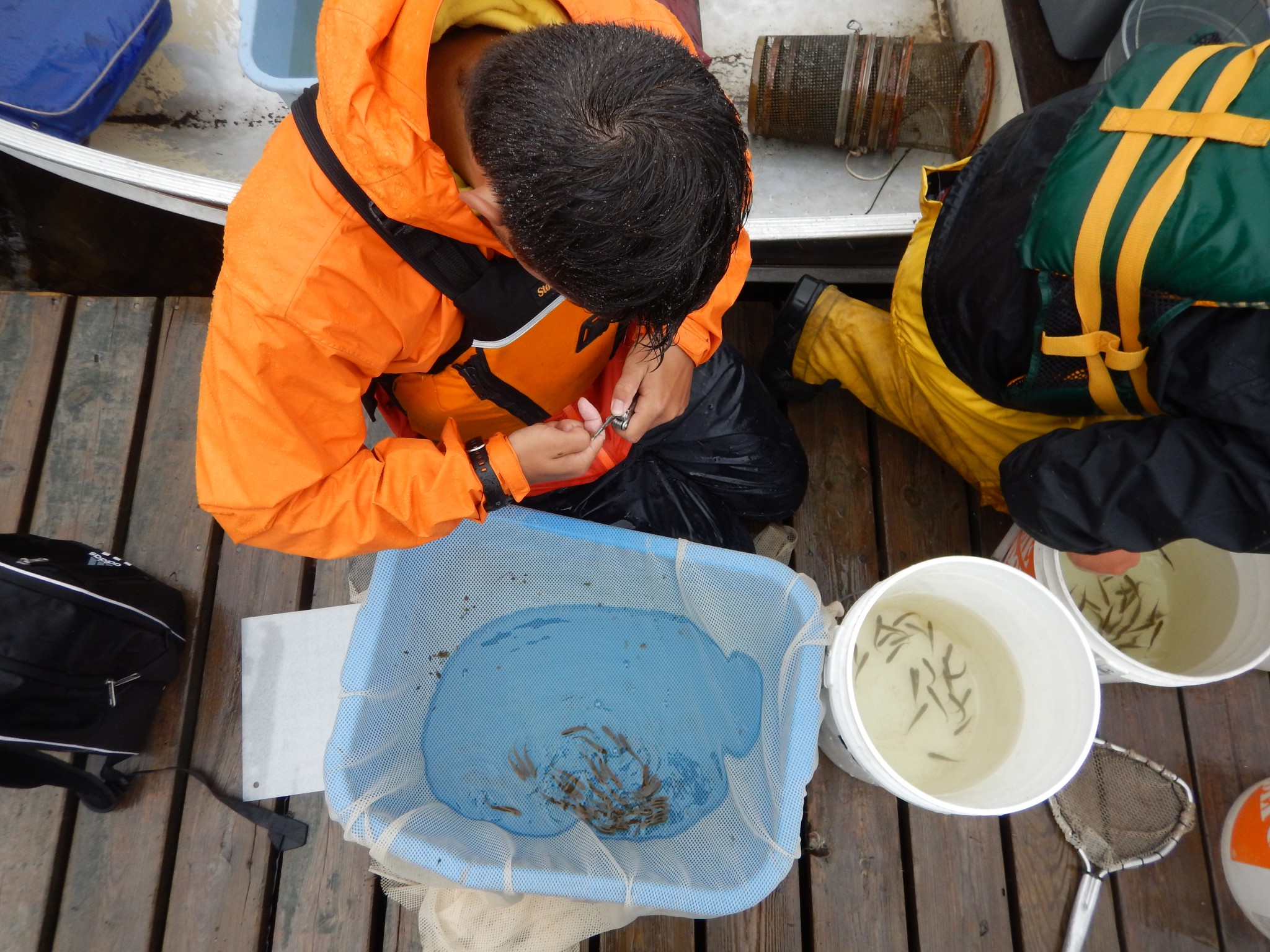
- Ontario Premier Kathleen Wynne (centre, in pink) stopped by IISD-ELA while on a canoe trip in September. After giving her a tour of the camp, she helped us pull in a beach seine net on Lake 240 to capture some yellow perch.
Photo credit: Lauren Hayhurst
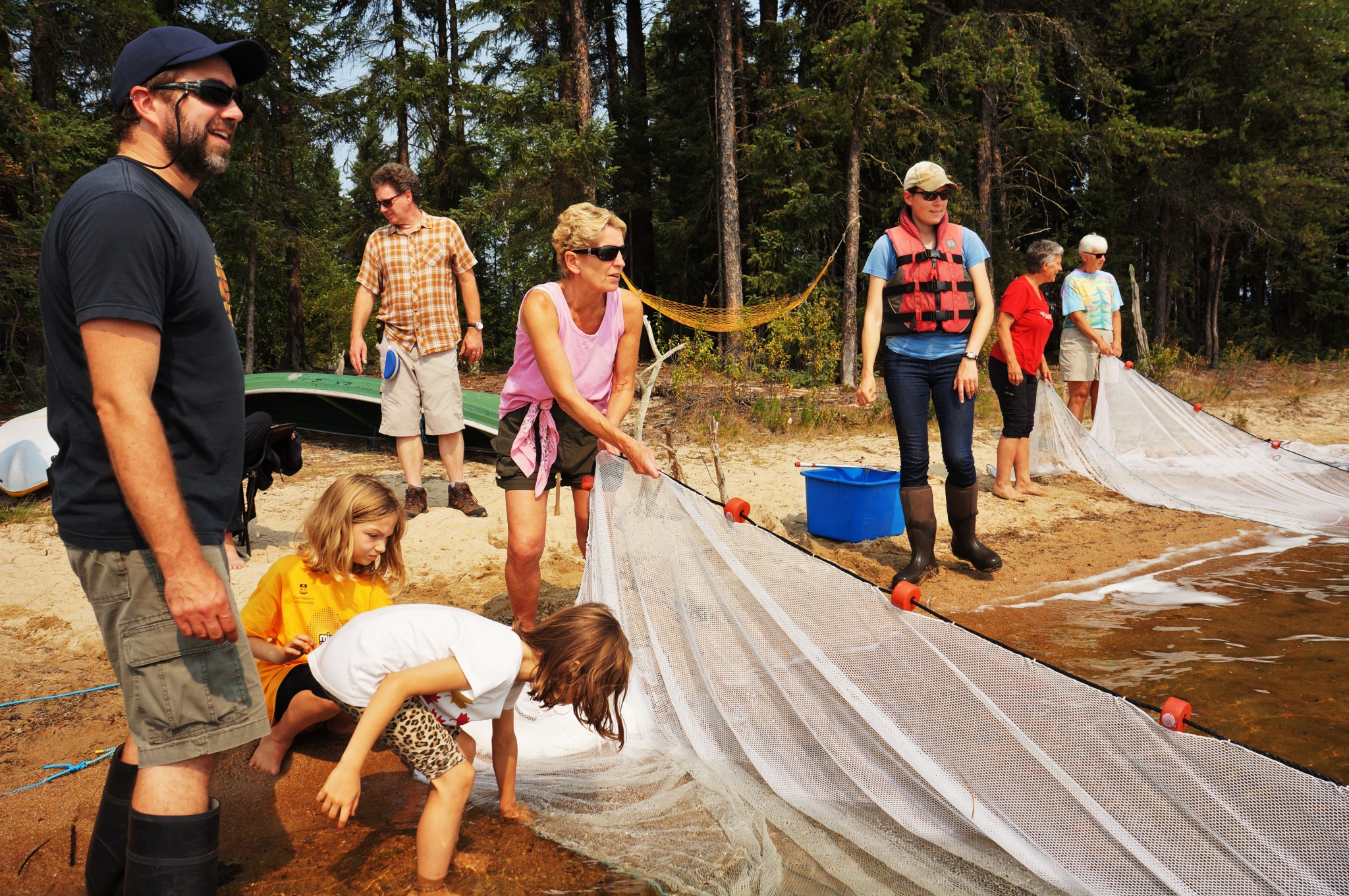
- The spring and fall at IISD-ELA involve a lot of trap netting for the fish crew. These nets are efficient, passive methods of collecting lots of fish in a short period of time without harming them. The image on the left shows an aerial view of two trap nets set in Lake 239 near the rocky lake trout spawning shoal. Trap nets capture fish of all sizes and can be very heavy when they are full! In the photo on the right, field assistant Phil Anderson (left) and Biologist Chandra Rodgers remove the catch from a trap net in Lake 224. These fish will be weighed, measured, some will be tagged, and then released back into the lake. Photo credit: AJ Chapelsky.
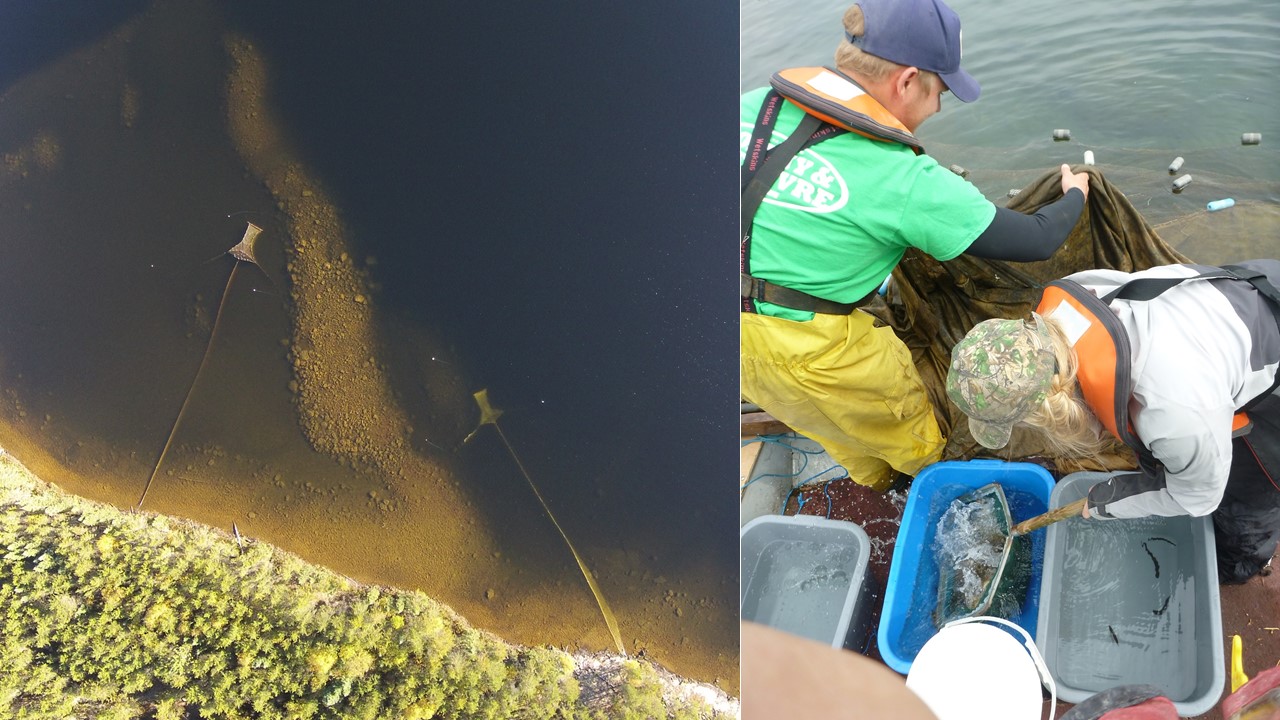
- Lake trout, one of our key study species, spawn on shoals of rock cobbles in shallow water when water temperatures drop below 12° C (usually in October). The calorie-rich eggs make good food for egg predators like this bottom-dwelling slimy sculpin (Cottus cognatus) who come onto the shoals and stuff themselves with eggs. You can even see the shape of an egg protruding from this sculpin’s belly!
